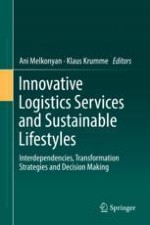2019 | OriginalPaper | Buchkapitel
9. Diffusion of a Social Innovation: Spatial Aspects of “Foodsharing” Distribution in Germany
verfasst von : Romy Kölmel, Carolin Baedeker, Jonas Böhm
Erschienen in: Innovative Logistics Services and Sustainable Lifestyles
Aktivieren Sie unsere intelligente Suche, um passende Fachinhalte oder Patente zu finden.
Wählen Sie Textabschnitte aus um mit Künstlicher Intelligenz passenden Patente zu finden. powered by
Markieren Sie Textabschnitte, um KI-gestützt weitere passende Inhalte zu finden. powered by
